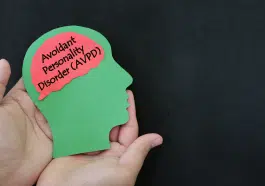If you’ve spent any time on neurodivergent TikTok, the topic of autistic burnout may have popped up on your fyp. So, what is this type of burnout specifically? Autistic burnout refers to a period of intense physical, mental, and/or emotional exhaustion for people with autism, especially adults. For children, it can sometimes be followed by a loss of skills.
Many autistic people say they experience this type of burnout due to living in a world that caters more to neurotypical people.
Burnout can impact autistic adults who have strong cognitive and language skills and spend a lot of time working or going to school with neurotypical people.
What Does Autistic Burnout Look Like?
Autistic burnout can happen to anyone with autism at any age but is especially prominent during significant life transitions. For example, during toddlerhood, puberty, or young adulthood. Basically, it can happen any time someone experiences lots of changes or stress.
As previously mentioned, young autistic children experiencing burnout can lose skills. For example, some children can forget a major portion of their vocabulary but still retain some words. Others may stop making sounds at all and only use physical gestures to communicate. In addition, autistic children may cease early social behaviors like responding to their names.
For autistic adults, they experience autistic burnout in the following ways:
- Enhanced sensitivity to sensory stimuli. For example, bright lights, loud noises, or uncomfortable clothing. As a result, many people need to stim to self-soothe.
- Emotional and physical exhaustion prevents a person from caring for themselves, whether it’s cleaning, preparing meals, or other daily tasks.
- More difficulty making decisions, switching between tasks, and/or other executive functioning abilities.
- Speech issues, like forgetting certain words or not being able to speak.
- Reduced skills when it comes to social settings.
- Issues with memory in general.
Currently, there are no diagnostic criteria for how many skills have to be lost for a person’s symptoms to qualify as autistic burnout. Also, the severity and length of these symptoms can vary between every person. So, for example, one individual could have varying levels of burnout at different points in life.
What Does Autistic Burnout Look Like?
Autistic burnout usually happens when life’s challenges overwhelm a person’s resources. For example, someone may be going through a stressful life transition, or they may have pushed themselves too hard for a while. No matter the reason, the coping mechanisms they previously had are no longer enough to get them through these events. As a result, specific skills and abilities will “shut down” for a brief time as the brain tries to recover. In addition, it can take the brain some time to recall these skills as the person adapts to their stressful and new circumstance.
Since research into autistic burnout is still relatively new, there hasn’t been any scientific answer that is definite as to why autistic brains have this reaction. However, one popular theory is that autistic people tend to have higher levels of neuroplasticity. In essence, autistic brains could find it easier to create new connections between nerve cells. Therefore, neuroplasticity can contribute to some autistic people’s problem-solving skills. However, since the brain may occasionally redirect its resources away from particular abilities as it forms new solutions to problems, it will cause those skills to go “temporarily offline.”
One essential thing to note is that autistic burnout is behavior that occurs consciously. In other words, an autistic individual is not simply ignoring social norms or neglecting their work due to exhaustion. It is not up to “willpower” for them to find their way back to their previous level of functioning. In actuality, autistic burnout is usually caused by people working overtime and way too hard to appear “normal.”
Are There Any Studies?
A study conducted in Autism in Adulthood, Vol. 2, No. 2 in 2020 analyzed the concept of autistic burnout. They determined that the main characteristics of autistic burnout were “chronic exhaustion, loss of skills, and reduced tolerance to stimulus.” Those who were surveyed described burnout as occurring due to life stressors and barriers to support. Because of these pressures, it created expectations to outweigh abilities that ultimately resulted in autistic burnout. From this study, they developed the following definition for autistic burnout:
“Autistic burnout is a syndrome conceptualized as resulting from chronic life stress and a mismatch of expectations and abilities without adequate supports. It is characterized by pervasive, long-term (typically 3+ months) exhaustion, loss of function, and reduced tolerance to stimulus.”
Participants in the study also described adverse impacts that burnout had on their lives, like health, capacity for independent living, and quality of life. Some people even experienced suicidal behavior and/or thoughts. These individuals also talked about a lack of empathy from neurotypical people. When it comes to recovery from this type of burnout, participants suggested solutions like acceptance and social support, time off/reduced expectations, and being able to “unmask” (the term “masking” describes behaviors that autistic people use to hide their autistic traits).
Is There a Way to Prevent Burnout?
An essential strategy for preventing burnout is education and self-awareness. Over time, autistic people can learn which situations will likely cause burnout. They can keep an eye out for signs and clues that they are approaching burnout. Some autistic people can feel disconnected from their bodies or even experience tunnel vision.
With this awareness, autistic adults can create strategies to avoid burnout, like leaving a social event earlier or scheduling a recovery day after a stressful or exhausting event. In addition, they can ask for accommodations to make any situation easier for them. For example, if a person works in an office, they could ask if they can work from home for part of the time.
How Can Autistic People Recover From Burnout?
Recovering from burnout ultimately depends on the individual experiencing it. For example, one step for some autistic people is to remove themselves from the situation that caused or triggered the burnout episode. Other people may need to take some time and spend more time alone to recover.
Some autistic people have described their burnout as so severe that it can persist for years. In addition, burnout can happen more frequently and be more challenging to recover from as people get older.














